Tue, 05 Aug 2014 . Last updated Mon, 01 Jun 2015 14:03

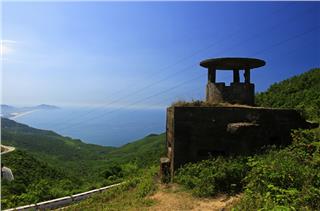
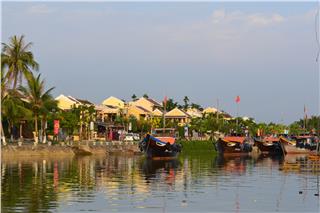
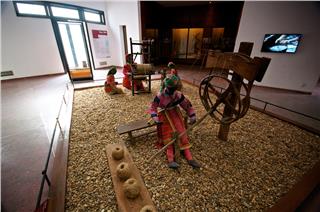
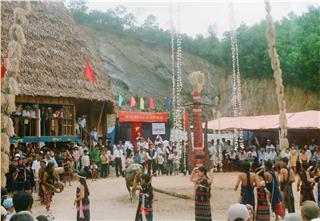

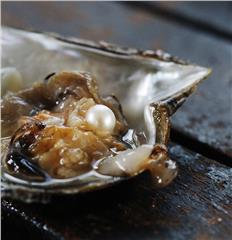

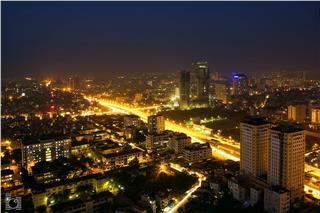
Phong Nha Ke Bang National Park karst has the global significance. It has the value of not only the geology and geomorphology but also the flora and fauna and high biological diversity. Phong Nha Ke Bang survived a primeval tropical forest keeping intact the wild beauty and the mystery of the nature. This is the convergence of the aesthetic, geological, cultural and historical values and biodiversity that are hard to find elsewhere. Therefore, Phong Nha Ke Bang was recognized as the world natural heritage site by UNESCO.
Located in the ecological area of the northern Truong Son which is considered as one of 200 large biodiversity centers of the world, Phong Nha Ke Bang National Park is the natural home to many precious and rare animals and plants having the value in the conservation and scientific research. The national park has the coverage of over 96%, of which 95% of the park area is the tropical forest ecosystem on the limestone mountain. Due to the rugged terrain, so most vegetation here has not been affected much. Phong Nha Ke Bang is the national park having the largest coverage and the proportion of the primeval forest among the endemic forests of Vietnam.
In recent years, the scientists have announced new species in Phong Nha Ke Bang. In particular, a population of limestone green juniper with the area of more than 2400 hectares has been discovered; below there is the habitat of many precious orchids. These are the endemic species only distributed on the limestone mountain at the height of 700-1000 meters.
Going the opposite direction of the street No.20, we came to the largest limestone green juniper population in Vietnam. We have to stop by the reluctant guests. There was the couple of centropus sinensis. With the cautiuos adtitude, the bird concentrated on the car without knowing what it is. We sat quietly inside the car so that the bird did not detect the human. Only an unusual move at this time, the chance to enjoy the suprised gift of the nature will be missed. After a short exploration, the male bird began to show the majesty of it. It spread its wings as if it wanted to show its strength. I wonder if the bird was threatening us or trying to please his girlfriend. Perhaps there was both 2 things because this was a golden opportunity for the male bird to prove its courage. However, sometimes it must pay a quite expensive cost, if sitting in our position at this time are hunters the centropus sinensis died before experiencing the sweet taste of happiness.
By the late afternoon, we arrived at the forest station no.39. In the resting time, we learn more information about the green juniper populations through the foresters. When the sun still hid behind the mountains, we acrossed several passes. Because the terrain of limstone mountain is faulted, our journey went up and went down. Just approach a steep cliff, the guide detected monkeys on the top mountain. With a distance, the rugged terrain, camera cannot approach closer. Assam macaque has the scientific name as Macaca Assamensis and is one of 10 primates in Phong Nha Ke Bang.
They often feed in the morning and the afternoon, while in the noon they rest under the trees. Their main food is plant species such as fruits, leaves, bamboo. Monkeys live in the family group consisting of many generations. They live in a relatively stable region. Assam macaque can move fast in every terrain, especially when climbing on the trees and cliffs. There was no chance to access the monkeys, we continued going to find the limestone green juniper populations. The deeper we go into, the more rugged the limestone terrain is. We cautiously cling to the ledge on the way to climb. Only a small negligence, we could have to pay a heavy price.
Up to the height of 700m, we see limestone green cypress growing on the mountainside. They have the quite big diameter located between the coniferous forest and broadleaf forest. The higher the trees are, the lower the green cypress forest is to front the big winds on the top mountain. The limestone green cypress or Calocedrus rupestris belongs to the Calocedrus genus, Cupressaceae family. This is the rare ancient endemic specie of the North Vietnam. They are distributed in the top of limestone mountains from Cao Bang, Bac Kan, Ha Giang to Son La, Hoa Binh through Nghe An and Quang Binh. With the narrow habitat condition, restricted distribution, the population has the small size exploited so strongly that this species is standing at risk of high extinction.
Continuing to climb higher, we saw the green juniper populations are distributed more densely. Standing on the highest peak in the area, before our eyes, there was a great spectacle landscape of the nature. The rolling mountains in the horizon look like endless. The Calocedrus rupestris population at Phong Nha Ke Bang is the only place of Vietnam preserved nearly primitively. This area has lots of high trees from 20 to 30 meter high and over 500 years of age. This is precious value of Phong Nha Ke Bang in particular, Vietnam in general as well as the entire humanity. The discovery this forest along with the complex species here shows that this is the diverse endemic center having the global significance. The urgent and efficient conservation of the forest populations here is the highest priority in the strategic conservation of Vietnam. The multiplication and planting is effective measures to preserve this living fossil.
Preparing enough the food for a whole week, we decided to explore U Bo Mountain. This is considered the narrowest place in Vietnam. According to the experts, U Bo Mountain has the most diverse level of the biodiversity in Phong Nha Ke Bang. During the journey, we always got surprised by the simplicity of the nature. The spiders with long legs attracted our attention. Each leg looks like a antenna helping them move to escape predators and enemies. In fact, the vision of spiders is not good, but they have an induction organ located in the top of the toes. Just forward direction foot or tapping on objects, it is possible to distinguish the target.
The diversity of the flora and the humid tropical climate make the mushrooms here extremely abundant. All have made the world creature more vivid, colorful and create interesting things for tourists. In the afternoon, the clouds covered fully U Bo peak. In a short while, the whole mountain was turned into a white color. According to the experience of the guide, we pitched lent near the stream to stay overnight.
The next morning, the team continued to discover the life of species underwater. Being startled by the appearance of the strangers, the stone crabs found their way into the hidden slot. When lying still, they mix into the moss of the stone and are easy to escape the enemy’s eyes. This is the important characteristics of them to survive in the world big fish swallowing little fish. If this measure does not have effect, they will raise two nippers to intimidate opponents.
A frog was waiting patiently as there is no concept of time. When seeing an egg nest nearby, we understood more about the mission of the frogs. The appearance of the crabs made it not assured of the eggs. The maternal instinct has prompted it to sit here and to repel predators. The pristine looks of the nature gave us the relaxing moments. All have painted a picture of nature with delicate sketchy lines. Over the period of important tectonics, and the phase fault movement has made a complex geologic appearance in Phong Nha Ke Bang. It plays a role as the cause of all causes creating diversity in topography and hydrographic network. The crisscrossed system of rivers, streams, waterfalls has contributed to increase the value of a world natural heritage.
A small turtle is leisurely staying out in the sun. Feeling something is wrong, the turtle poked his head to observe around, when seeing our, it found the way to run away quietly. The bright spots on its head confirm this is a 4-eye turtle. This species has the scientific name as Sacalia quadriocellata, distributed mainly in the mountainous areas in North and Central Vietnam. When seeing danger, the turtle hides its entire body into the tortoise shell and it feels secure thanks to this safe amour. Four bright spots like four eyes will help them to defend themselves in danger. As sticking their head out of the shell, the four artificial eyes would terrify enemies so that they dare not attack. The bright spots are green in males and yellow in females. The four eye turtles often live in the stream in the forest, they eat insects in the water as worms, tadpoles and other aquatic animals.
Early the next morning, we heard the song of the Chiki chimpanzee song echoing from the other side of the cliff. Do not miss this chance; we brought the camera following the direction of the song. A female ape was swinging on the old tree canopy. As a rule, the chimpanzee tends to live under the family including a male, a female and the juveniles. We hid in the secret place to avoid detection of chimpanzee family. Observe carefully around we did not see the shadow of a male and the other members of the herd. According to this speculation, this could only be new mature children; it just separated from the herd and their parents and was seeking a male chimpanzee. Its song in the morning was an invitation to other males alone. When finding the male chimpanzee, they will create a new family and the next generation is born again.
In the journey exploring the U Bo peak, we witnessed many interesting stories of the creatures. To have vivid footage of the wild life, I myself have many times to bother them. Our appearance accidentally broke the sleep of a small Ceylon. According to the automatic reflex, it was panic-stricken and frightened, groping its way to run away. The Ceylon species is only agile at night, in the daytime; they look slow and have poor vision. Standing in front of human, the number one enemy of all species, it crawled around. It did not know where to go to escape from our pursuers. The long time made it familiar to strangers, as feeling our presence was not a threat to its lives, the Ceylon looked calmer. It used to smell for navigation and judgment the enemy. The eyesight of this species is very poor during the day but they can look good at night. Thanks to the great olfactory system, the Ceylon smelt food somewhere. In the hunger, it forgot the danger to move the smell towards the prey. By cleverly disguised ability, beetle sticks escaped our eyes from the beginning to now, but unfortunately, the Ceylon hunts by the smell. Scenting ability of the Ceylon has disabled disguised ability of the prey. Necessary laws of nature always belong to the strong.
Source: VTV1 - vtv.vn

 Đặt vé máy bay cho người Việt?
Bấm vào đây
Đặt vé máy bay cho người Việt?
Bấm vào đây
Our service uses cookies for technical, analytical and marketing purposes. See our Cookie và Privacy policies for more information. If you agree to this, just keep browsing.


